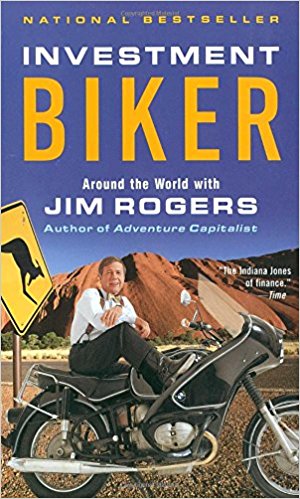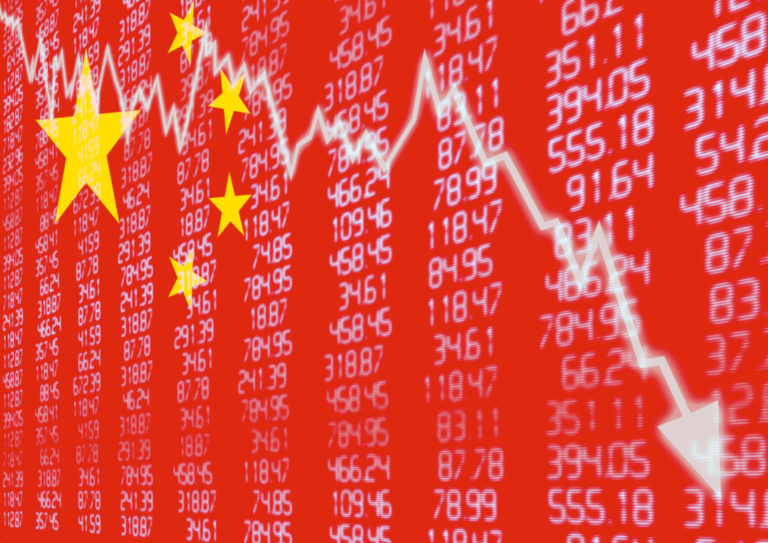The Benefits of Investing in Emerging Market
Investing in emerging markets is often misunderstood — risky and associated with Indiana Jones types. That might have been the case 30 years ago, but today, investing in emerging markets is a highly sophisticated form of investing, and in fact, is one of the last hunting grounds for value-oriented investors.
In this article, we will have a look at its definition, the many benefits of investing in emerging markets and how you could profit going forward.
[Read here how to invest in emerging markets]
What are Emerging Markets?
An emerging market is usually a country that does not meet the definition of a ‘developed’ market, but has been experiencing consistent economic growth — and a general strive to fulfill the standards of developed markets. A developed market is defined as those countries “that are most developed in terms of its economy and capital markets. The country must be high income, but this also includes openness to foreign ownership, ease of capital movement, and efficiency of market institutions.”
According to this definition, there are only a few countries that fulfill all the criteria of a developed market — for example, countries such as Venezuela or even China today don’t fit the bill of a true developed market. However, countries such as Germany or Japan clearly fall under this definition.
Inevitably, there are various sub-categories within countries that are put together as emerging market countries. The main subgroups are “frontier markets” and “large emerging markets.” Frontier markets are developing countries with slower and less developed economies than large emerging market countries. Countries such as Myanmar or Zimbabwe would fall under this category. In contrast, the economies of China and India are considered large emerging markets.
In recent years, financial providers and investment managers have been switching to a new terminology to describe countries less developed than the US, Europe, or Japan: Global Growth Markets. The four largest countries among them by GDP are Brazil, Russia, India and China, the famous “BRICs.” Acronym investing is always a great marketing ploy on Wall Street, which sometimes bundle in countries like Indonesia in their packages. Then there were copycats coming up with acronyms such as EAGLEs (“emerging and growth leading economies.”)
Whatever the debate about proper naming, emerging market investing has seen its phenomenal growth. According to the IMF, by 2007, total assets under management by mutual funds reached $2.7 trillion. This included the three regions of Asia, the Middle East and EMES (Emerging Europe, Middle East, and Africa). As of 2016, there was a staggering $85 trillion invested, mostly in G7 countries — with emerging markets constituting less than 10%.
Nevertheless, emerging markets, whether stock, bonds or real estate, has become an important asset class in any asset allocation strategy administered by large institutional investors. And the slice of the pie made up by EMs, led by China’s and India’s rise, is sure to grow over the next 20 years.
Early Emerging Markets Investors
Today, investing in emerging markets is dominated by professional investment firms, such as Fidelity and BlackRock, or hedge funds such as Citadel and Bridgewater Associates. But it was the relentless work of a few individuals that made investing in fast-growing countries more approachable for investors worldwide. Three noteworthy individuals deserve to be mentioned here.
Sir John Templeton – International Bargain Hunter

Experiencing the Great Depression, Templeton was always cost conscious and eager to find bargains throughout his life. His investment philosophy reflected this harsh upbringing; according to Templeton, “an investor needs the ability to recognize unfamiliar value more than any other skill.” He called this core ability ‘flexibility.’
Templeton’s career as a master stock picker began in 1939 when he correctly forecasted what a World War would do for the US economy when all resources and production were mobilized, and the war would end in America’s favor.
He bought Japanese stocks at a time when Japan was still considered an emerging market.
Templeton focussed on buying only what he determined, price-wise, was being thrown away. Second, he held the stocks he had bought for an average of four years. His searching led him to beyond his native border. His first significant investment overseas was in America’s old foe – Japan. He bought his first Japanese stocks in 1962 when Japanese blue-chip companies were trading at two or three times adjusted earnings. At one time he had 60% invested in the finest businesses Japan had to offer (1970). It was a home run. He easily beat the competition for several years in a row, far outperforming any domestic US mutual fund manager with high double-digit returns.
Jim Rogers – On the Ground Research

When the dotcom bubble swelled between in 1998 and 1999, only a few people noticed certain asset classes trading at historically depressed prices. Rogers had already loaded up on various commodities as early as 1998 when the majority-owned investment names ending with .coms in their portfolios because he recognized that commodities were not only out of fashion, but were trading at ridiculously low price levels relative to the economic development in emerging markets — particularly in China. Due to his diligent studies of financial history and commodity cycles, Rogers realized that he was onto something that seemed to be almost too good to be true – a real no-brainer. In 1999, for example, you could buy crude oil for less than $20 a barrel at a time when China and other large emerging markets were hungry for raw materials. In 2008, oil reached its peak of about $140 per barrel.
On his second circumnavigation of the globe between January 1999 and January 2002, he saw that economic changes were coming to Brazil, Russia, India, China, and South Africa, even before the BRICS acronym was coined in 2001. Traveling in his custom-made yellow Mercedes SLK, he further confirmed that he was on the right path to making long-term investments in all major commodities, including agricultural commodities. This was old-fashioned, on-the-ground research that looked into areas where other people didn’t dare or were too complacent, to look.
Mark Mobius – The Promoter

Born to German and Puerto-Rican parents he grew up in New York, Mobius studied in several countries including Mexico and Japan gaining a Ph.D. in economics. He is fluent in several languages, and he has a passion for traveling which manifested while working for Franklin Templeton’s Emerging Market Team. During his 30 year career as emerging markets expert, he was known to be a relentless traveler. Flying his corporate Gulfstream IV, he spent more than 300 days away from home base in the US gaining him many nicknames within the firm. His passports were replaced often, filled up with the stamps of countries you might only be vaguely familiar with.
Franklin Inc. acquired John Templeton’s original management company in 1992 creating Franklin Templeton Investing. Mobius himself joined Templeton in 1987 before Franklin took over. As president of the Templeton Emerging Markets a closed-end mutual fund series, he took over the fund that was administered by John Templeton himself.
Mobius is also a valuable example in showing us that things are not always rosy in EM investing. Frequently, he would be wrong on betting on exotic countries too early, or not warning his clients about impending financial doom of which there are many in emerging markets history. Recently, his firm has suffered a decline in assets, as investors have been looking for modern ETF solutions and funds with better track records. Nevertheless, his name has and will always be connected as one of the great pioneer emerging markets investors.
Why invest in Emerging Markets?
There are plenty of more famous emerging markets investors, such as the Chandler brothers, but from these three investors, we have seen how beneficial investing in emerging markets can be, if you apply the right strategies and avoid the usual pitfalls of investing in less liquid and less transparent assets classes. Here is an overview of the main benefits of investing in emerging markets.
The last Bastion of Growth
During the US housing crash and resulting credit crisis of 2008, world markets were saved from a total disaster thanks to a few countries that are still considered emerging markets. These were the aforementioned BRICs – Brazil, Russia, India, and China.
Bankers and politicians in the West started to believe that the bad old days were over. The world order was reversed, where America stumbled and old Europe would soon experience its worst financial crisis that would shake the foundation of the European Union to its core. Countries most affected by the European Financial Crisis were put together into another illustrative acronym: PIGS or PIIGS (Portugal, Italy, Ireland Greece and Spain). From now on, stability would rest in the East – and the longer term prospects here were much better.
The crisis revealed the inevitable drive of globalization and the interconnectedness of the financial world. But it also brought those countries that hadn’t participated in the financial excesses of the 2000s to the forefront – countries like China and India, which were laser-focused on restructuring and reforming their economies for future potential growth.
According to the International Monetary Fund, around 70% of world growth over the next few years will come from emerging markets, with China and India accounting for 40% of that growth. It is expected that China’s purchasing power will surpass that of the US by 2020.
Where Japan is happy with 1% GDP growth, the Eurozone can be happy to have Germany to achieve rates of less than 2%, and the USA is proudly presenting rates of less than 2.5% growth, EMs are firing away at rates of 6 to 7%. According to IMF, estimates, “they are expected to grow two to three times faster than developed nations like the US.”
This is good news for bond and stock market investors. Corporate profits tend to grow faster when economic growth is higher. Higher growth should turn into sizeable stock market returns and many emerging markets have the potential to deliver both in the next 10 to 20 years.
Better Demographics
Most emerging markets have young working-age populations that contribute to the workforce, to consumption and help with the social responsibility to care for the elderly.
Right now the US is dominating consumption, accounting for 25% of the world’s spending. However, a rising middle class in many emerging countries will slowly but steadily leave their mark on global consumption. A particular role when it comes to future consumption will fall to Asia, where nearly half of the world’s population is based.
Japan has always been a devoted consumer of luxury brands and brand consumer goods, but China is outdoing Japan. From luxury cars and fine wines to enjoying a weekend at Disneyland, the rising middle class (and the elite) are hungry for goods and entertainment from the West. Moreover, the wealth in China is more tilted towards the younger population as compared to Japan or America. Many Chinese millionaires got their wealth from building enterprises and nurturing an entrepreneurial spirit at a relatively young age, according to Forbes surveys.
Startups Galore – Tech Savvy and Innovative
That brings as to another important reason to consider emerging market economies. These countries have learned that in order to compete with the West, they must go for industries that are less capital- and infrastructure-dependent. In short, and perhaps paradoxically, many less developed countries are remarkable tech savvy. Whether it be China, India or relatively small countries such as Vietnam, several emerging markets have seen their profile rise as tech powers with a well educated and technologically engaged younger generation working in firms such as India’s Infosys.
These companies have the resources and the capability to disrupt the status quo in Western countries, and Asia’s commensurate infrastructure just keeps growing – countries such as Singapore or South Korea, for example, have developed hubs for technology startups.
Investors today can invest in the entire lifecycle of start-ups, from very early stage to more mature tech companies. Tech companies such as Alibaba or Tencent Holdings are vying for global dominance with their strong home basis to fuel expansion overseas. For the smart investor, this is a series of opportunities that simply can’t be ignored.
Plenty of Natural Resources

A classic example of the symbiotic relationship among emerging market economies is the often quoted Brazil China Trade. Brazil is resource-rich, while China remains a big importer of raw materials and on balance has far fewer resources than its exploding economy needs. Overall, emerging market countries have a disproportionate share of natural resource wealth. Countries rich in natural resources benefit as more emerging markets industrialize powering a wealth spiral upwards.
It has become easier to invest
In the early days of Mark Mobius or Jim Rogers roaming the world, it was extremely difficult and inconvenient to invest in companies in emerging markets. You literally had to visit the country in question, open a bank and brokerage account at local companies, and even visit the individual stock exchanges.
Not any longer. Investors have a slew of investment options today. Whether standard mutual funds or exchange-traded funds (ETFs) the number of issuances is constantly growing support by a wide range of indices and benchmarks.
The leading index funds and ETF providers Vanguard and BlackRock offer a wide range of industry and country emerging markets at low cost. For stock markets, there is the MSCI Emerging Markets index, which is recognized as the leading benchmark when it comes to global emerging markets investing.
This trend has been supported by improved liquidity in many emerging markets, and the general growth of the average market caps. Many companies have reached a size that has made it easy for institutional investors to invest in them.
In 2005, the US, UK and Japan, home to the world’s most liquid stock markets, accounted for 60.5% of the world’s market cap, while Brazil, Russia, India, China, Hong Kong, Taiwan and Singapore accounted for just 8.3%. By the first quarter of 2011, the US, UK and Japan accounted for 47.4% of world market cap and the most active emerging market exchanges accounted for 21.6%.
Value and Opportunity
Last but not least, emerging markets offer a rich source of value opportunities. Whether we are talking about deep value – where net cash is bigger than the entire market cap – or companies that offer high growth potential at reasonable prices (GARP), emerging markets offer it all.
In the end, it’s how you define your investment strategy or what your personal preferences might be that really helps you find opportunities in the stock markets of emerging economies. The fact is, that the large majority of investors are still underweight emerging markets in their portfolios.
For all these aforementioned reasons, we predict that dramatic changes in the coming year offer a great catalyst to unlock hidden value, attract more capital and hence rising prices that will provide outperformance over developed markets.
Emerging Markets Investing Next Steps
There are many benefits of investing in emerging markets and what excites me most is that it offers both value and growth opportunities with phenomenal return prospects going forward. In order to participate in the exciting asset class but to avoid the usual mistakes and reduce the risk that comes with investing in this asset class, it is now time to consider the most suitable investment strategies and to apply the lessons learned from the history of emerging markets investing.
[Read here how to invest in emerging markets]






